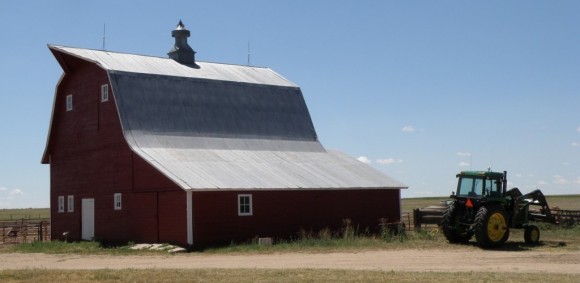Historically, barns were the central feature of the farmstead and served a variety of functions. The first floor general included some horse stalls, an area with stanchions for dairy cattle, a tack room, and some equipment storage space. The loft above was for hay storage. As horses and dairy cows disappeared from the farmstead, the barn was adapted to other uses including machine or grain storage as well as hog farrowing or a calf shed. Today, most farm machinery is too large to fit in the barn and few farmers keep livestock besides possibly some horses for recreation. As a result, many barns are underutilized, serving primarily as miscellaneous storage.
Surveyed barns have been categorized by roof type, since this is the most obvious character-defining feature. The primary difference on the interior was the size of the loft space. The most common type was gabled roofs. This is the simplest and earliest barn roof type. The dual-pitch gambrel roof replaced the gable roof because it allowed much more loft storage space. Since the gambrel roof is more complex to construct that the gable roof, it is more expensive to construct. The predominance of the gable roofed barns seems to suggest that many farmers did not need the extra storage space and thus went with the simpler form. These farmers were likely only keeping a handful of horses and dairy cows and the gable loft was sufficient for the amount of hay they needed to store.
The gambrel roof and Dutch gambrel roof barn are the most common types after the gable roof barn. The Dutch gambrel features a flare at the eaves. The flare was designed to direct rainwater away from the base of the wall and thus preserve the barn foundation.




